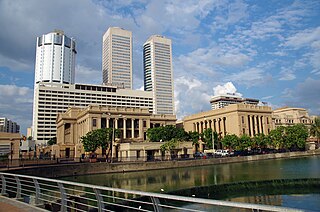
Colombo is the executive and judicial capital and largest city of Sri Lanka by population. According to the Brookings Institution, the Colombo metropolitan area has a population of 5.6 million, and 752,993 in the Municipality. It is the financial centre of the island and a tourist destination. It is located on the west coast of the island and adjacent to the Greater Colombo area which includes Sri Jayawardenepura Kotte, the legislative capital of Sri Lanka, and Dehiwala-Mount Lavinia. Colombo is often referred to as the capital since Sri Jayawardenepura Kotte is itself within the urban/suburban area of Colombo. It is also the administrative capital of the Western Province and the district capital of Colombo District. Colombo is a busy and vibrant city with a mixture of modern life, colonial buildings and monuments.
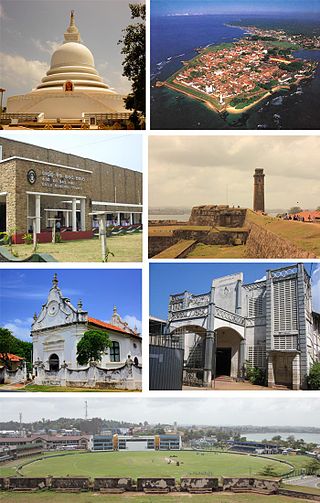
Galle is a major city in Sri Lanka, situated on the southwestern tip, 119 km (74 mi) from Colombo. Galle is the provincial capital and largest city of Southern Province, Sri Lanka and is the capital of Galle District.
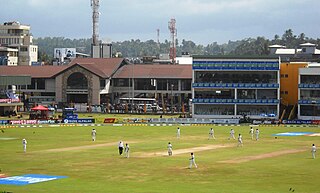
Galle International Stadium is a cricket stadium in Galle, Sri Lanka, situated near Galle Fort and fringed on two sides by the Indian Ocean. It is considered to be one of the most picturesque cricket grounds in the world. Before being brought up to international cricket standards, it was known as 'The Esplanade', and is the home ground of the Galle Cricket Club. This Stadium is identified as one of the luckiest venues for the Sri Lankan national cricket team.

The National Maritime Museum or National Maritime Archaeology Museum in Galle, Sri Lanka is situated within Galle Fort. It was first opened to the public on 9 May 1992 and is located in a 1671 Dutch Warehouse above the Old Gate of Galle Fort. Whilst the building housing the museum survived the impact of the 26 December 2004 tsunami, the adjoining UNESCO Maritime Archaeology Unit was completely destroyed and all the exhibitions were flood damaged and the majority of maritime archeological artifacts were lost. Under Sri Lanka – Netherlands Cultural Co-operation Program, the Royal Government of Netherlands provided financial assistance for reconstruction of the Maritime Museum. After 3 years period of reconstruction, the Maritime Museum was re-opened to the public.
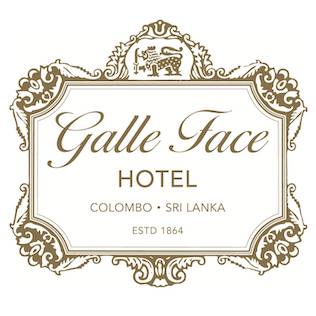
The Galle Face Hotel, founded in 1864, is one of the oldest hotels east of Suez. It is located on Galle Road, Colombo. The Ceylon Hotels Corporation is now part of the Galle Face Hotel Group. The hotel is a member of Select Hotels and Resorts International. The current chairman of the hotel is Sanjeev Gardiner, since the demise of his father Cyril Gardiner in 1997. It is listed as one of the "1000 Places to See Before You Die" in the book of the same name. It received the "Best Heritage Hotel" title three years running at the Presidential Awards for Travel and Tourism, held in June 2010, June 2011 and September 2012. In addition it won the first-ever PATA award for Best International Heritage Hotel, in 2012. In September 2012, it became the first hotel in Sri Lanka to be featured on a postage stamp, along with three other iconic buildings in Colombo.
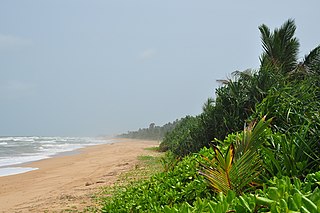
Bentota is a coastal town in Sri Lanka, located in the Galle District of the Southern Province. It is approximately 65 kilometres (40 mi) south of Colombo and 56 kilometres (35 mi) north of Galle. Bentota is situated on the southern bank of the Bentota River mouth, at an elevation of 3 metres (9.8 ft) above the sea level.

Galle Face is a 5 ha ocean-side urban park, which stretches for 500 m (1,600 ft) along the coast, in the heart of Colombo, the financial and business capital of Sri Lanka. The promenade was initially laid out in 1859 by Governor Sir Henry George Ward, although the original Galle Face Green extended over a much larger area than is seen today. The Galle Face Green was initially used for horse racing and as a golf course, but was also used for cricket, polo, football, tennis, and rugby.

The architecture of Sri Lanka displays a rich variety of architectural forms and styles. Shaivism has had a significant influence on early Sri Lankan architecture, during the reign of King Ravana, then Buddhism has also had a significant influence on Sri Lankan architecture, since it was introduced to the island in the 3rd century BCE.

Dutch colonial architecture refers to the various style of Dutch architecture built across the Dutch Empire. Though most of the buildings were designed by Dutch architects and dictated by Western architectural styles, even the most ardent style-purists among architects could not escape the forces of context and culture. Dutch colonial architecture often is a result of climatological adaptations or the use of local building materials - and more importantly, the rich and diverse cultural contexts. In this hybridity lies the quality of these buildings. Architecture shows that the strict racial taxonomy of a colonial system could not be maintained.
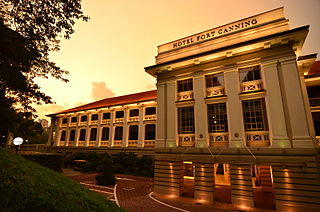
Hotel Fort Canning is a boutique hotel opened in 2010 in Fort Canning Park, Singapore. Located near the Orchard Road and Clarke Quay Nightlife districts, the building was the British Far East Command Headquarters during World War II. The building was restored and reconstructed as a hotel by architectural firm DP Architects which sought to maintain its British colonial architectural style and the multi-columned façade of the old headquarters.
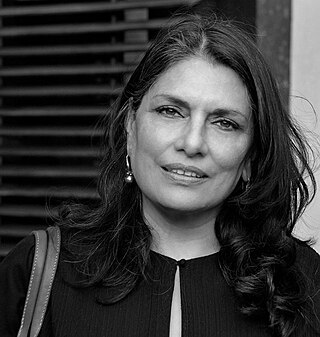
Sunita Kohli is an Indian interior designer, architectural restorer and furniture manufacturer. She had restored and decorated Rashtrapati Bhavan, Parliament House Colonnade (1985–1989), the Prime Minister's Office and Hyderabad House in New Delhi.
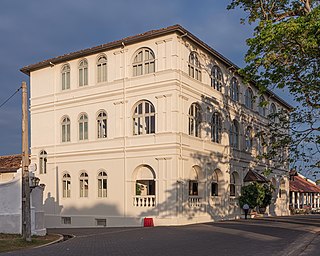
Amangalla is a 5-star franchise hotel belonging to the international group of Aman Resorts, located in Galle, Sri Lanka built within Galle Fort, the 17th-century Dutch fort, inscribed as a UNESCO World Heritage Site. Just to its north is the Galle International Stadium and roundabout. The oldest part of the hotel dates to 1684, and the complex was completed in 1715. It was known as the New Oriental Hotel for 140 years from 1865. In 2005 it became Amangalla resort complex. Aman means "peace" and galla is the Sinhalese name for Galle.
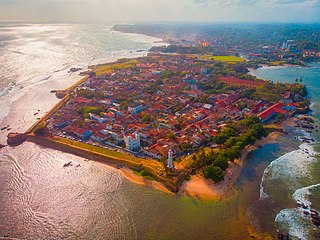
Galle Fort, in the Bay of Galle on the southwest coast of Sri Lanka, was built first in 1588 by the Portuguese, then extensively fortified by the Dutch during the 17th century from 1649 onwards. It is a historical, archaeological and architectural heritage monument, which even after more than 432 years maintains a polished appearance, due to extensive reconstruction work done by the Archaeological Department of Sri Lanka.

The Groote Kerk or Dutch Reformed Church is located within the Galle fort in Galle, Sri Lanka and is situated near the entrance to the fort. The church was built by the Dutch in 1755 and is one of the oldest Protestant churches still in use in the country.
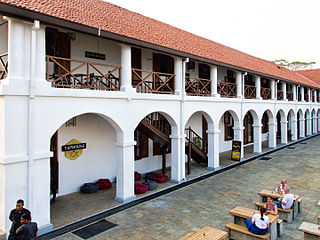
The Old Dutch Hospital, Galle is one of the oldest buildings in the Galle Fort area dating back to the Dutch colonial era in Sri Lanka. The heritage building has now been developed into a shopping and dining precinct.
Peter Daniel Anthonisz was a Burgher doctor who was the first Ceylonese to obtain an M.R.C.P. and F.R.C.S. He was also the inaugural president of the Ceylon Branch of the British Medical Association and a member of the Legislative Council for nine years.

Clan House is a two-storey white stone building, located at 24 Church Street, Galle.
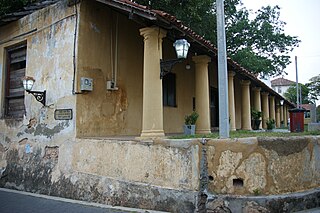
The Galle Fort Post Office is the post office in Galle Fort, Sri Lanka.
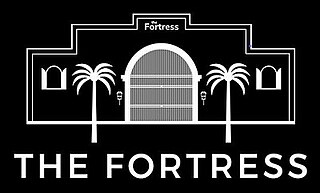
The Fortress Resort & Spa, traded as The Fortress Resorts PLC, is a luxury boutique hotel in Koggala, Sri Lanka. The resort was incorporated in 1973. The resort is listed on the Colombo Stock Exchange. In 2003, Sri Lankan entrepreneur, Dhammika Perera acquired a controlling stake in the resort. The resort was formerly known as Club Horizon Hotel, Koggala and was renamed to its current name in the same year. The hotel was affected by the 2019 Easter bombings. The resort is designed like a fortress to enclose a Dutch-era villa.



















